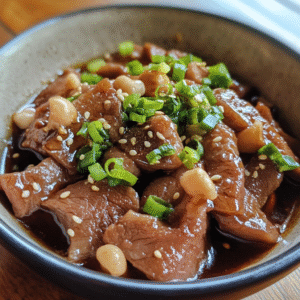Beef tendon Recipe is a flavorful and versatile ingredient often used in various cuisines around the world, particularly in Asian cooking. Known for its unique texture, beef tendon becomes tender and gelatinous when cooked slowly, making it a prized addition to soups, stews, and braised dishes. Rich in collagen, beef tendon is not only delicious but also offers a variety of health benefits, including promoting joint health and skin elasticity. Whether you’re exploring traditional dishes or experimenting with new recipes, Beef Tendon Recipe can be a great way to elevate the flavor and texture of your meals.
Preparing beef tendon can seem intimidating to some, but with the right recipe, it can become a delicious and comforting dish. The key to cooking Beef Tendon Recipeis slow and steady heat, which allows the tendon to soften and absorb the flavors of the broth or sauce. A common preparation method is to simmer the tendon for several hours, sometimes with aromatic ingredients like ginger, garlic, soy sauce, and spices, to bring out its rich, savory taste. Once cooked, the tendon has a melt-in-your-mouth quality that pairs beautifully with noodles, rice, or even as a standalone dish.
If you’re looking for a beef tendon recipe that combines simplicity with rich flavor, there are plenty of options to choose from. One popular method is to prepare beef tendon soup, where the tendon is simmered in a savory broth until tender, creating a dish that’s both comforting and nourishing. For a more adventurous take, bBeef Tendon Recipe can be stir-fried with vegetables or incorporated into a braised dish. No matter how you choose to cook it, beef tendon offers a unique culinary experience that showcases the depth of flavor possible with this often-overlooked ingredient.
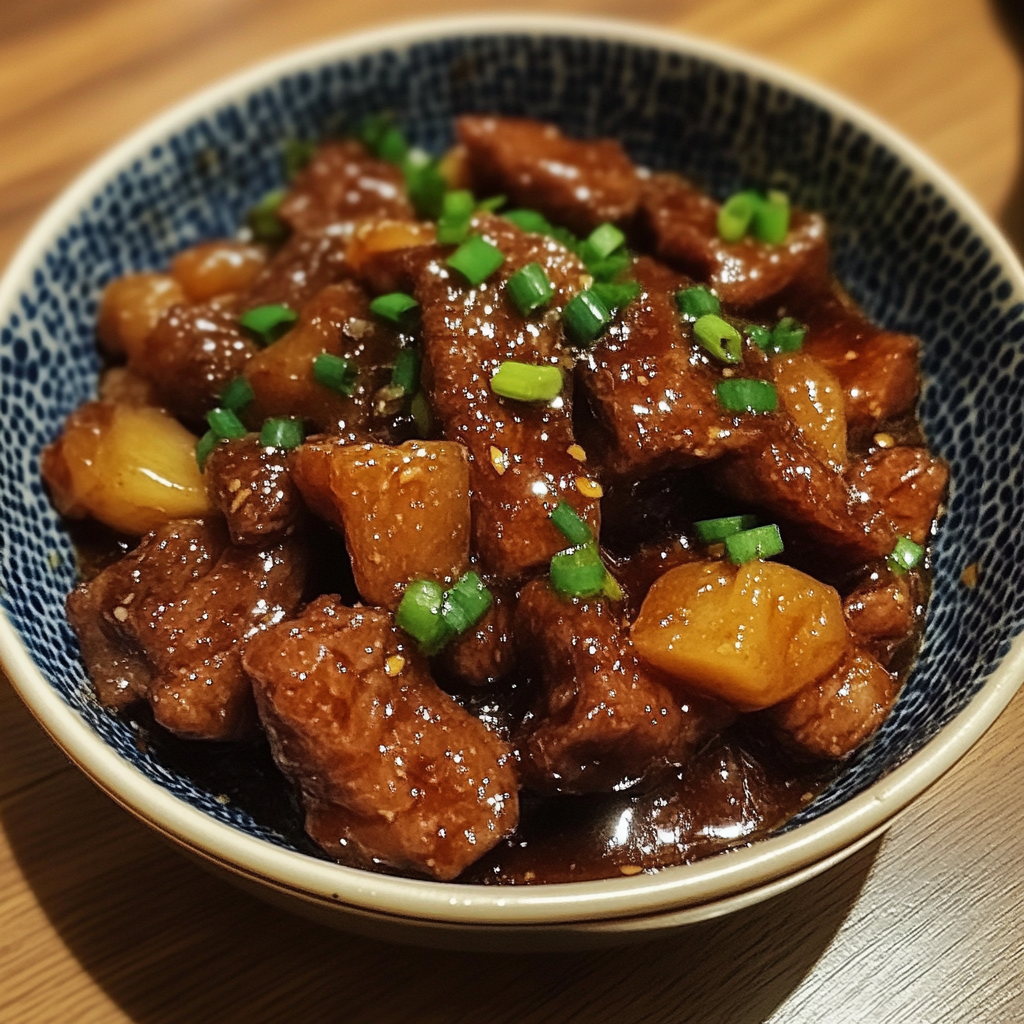
- The Secret to Cooking Beef Tendon: Slow and Steady Preparation
- Popular Beef Tendon Recipes to Try at Home
- The Health Benefits of Beef Tendon: More Than Just a Flavorful Dish
- How to Prepare Beef Tendon for Cooking: Cleaning and Pre-Cooking Tips
- Beef Tendon in Modern Cuisine: Creative Recipes and New Trends
- Pairing Beef Tendon with Side Dishes and Garnishes
- Beef Tendon for Special Diets: Low-Carb, High-Protein Options
- Beef Tendon: A Budget-Friendly Protein Option
- The Science Behind Cooking Beef Tendon: How Collagen Breaks Down
- How to Make Beef Tendon Soup: A Step-by-Step Guide
- Beef Tendon in Stews and Braises: The Art of Long-Simmered Cooking
- Cooking Beef Tendon in a Pressure Cooker: Faster Results with Maximum Flavor
- Marinating Beef Tendon: Adding Extra Flavor to Your Dish
- Beef Tendon Recipe From DishBloom!
- Conclusion
- FAQs: Beef Tendon Recipe
- Share Your Twist!
The Secret to Cooking Beef Tendon: Slow and Steady Preparation
Cooking Beef Tendon Recipe requires patience and the right approach to bring out its tender, melt-in-your-mouth texture. Unlike other cuts of beef that can be quickly cooked, beef tendon benefits from a slow cooking process. When simmered for hours, the collagen in the tendon breaks down, turning the once tough cut of meat into a delicate, flavorful addition to any dish. The key to a successful beef tendon recipe is low and slow heat, often paired with ingredients like soy sauce, ginger, garlic, and spices to infuse the tendon with rich flavors. Whether you’re making a savory soup or a hearty stew, ensuring that the tendon is cooked long enough is critical for achieving the perfect texture.
Popular Beef Tendon Recipes to Try at Home
There are countless ways to incorporate beef tendon into your cooking, depending on the flavor profile you desire. A classic and comforting dish is beef tendon soup, where the tendon is simmered in a flavorful broth, allowing the gelatinous texture of the tendon to enrich the liquid. Some variations of this recipe include adding vegetables, herbs, and seasonings that further enhance the taste. Another popular method is braising Beef Tendon Recipe with a variety of spices, creating a dish that’s tender and bursting with savory goodness.
Beef tendon can also be stir-fried with vegetables or served as a filling in dumplings, offering a delicious way to enjoy this often-overlooked cut of meat. Regardless of the method, a well-prepared Beef Tendon Recipe dish will be a memorable addition to your recipe collection.
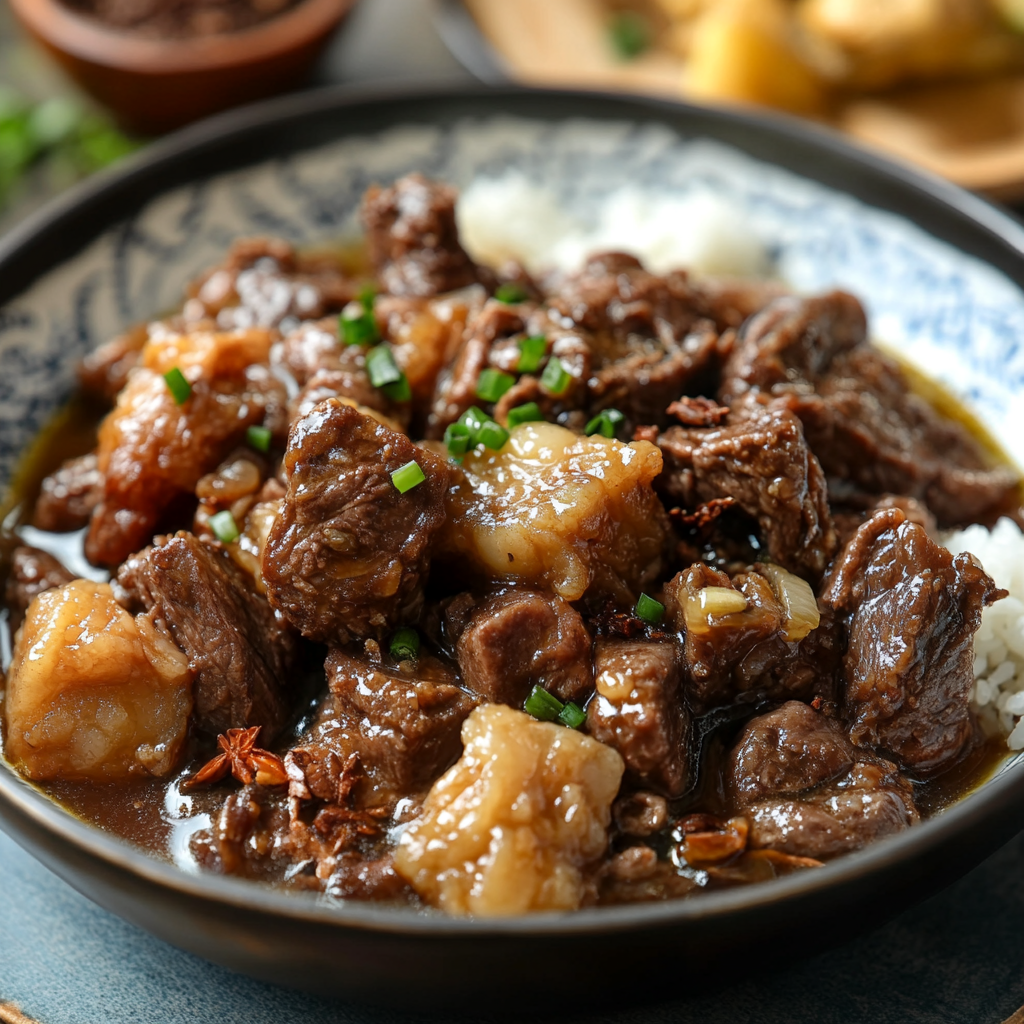
The Health Benefits of Beef Tendon: More Than Just a Flavorful Dish
Here is a table summarizing the health benefits of beef tendon:
| Health Benefit | Description |
|---|---|
| Supports Joint Health | Beef tendon is rich in collagen, which is essential for maintaining the integrity of joints and tendons. |
| Promotes Skin Elasticity | Collagen from beef tendon helps maintain skin elasticity, contributing to a more youthful appearance. |
| Improves Skin Appearance | Regular consumption of beef tendon can help improve the appearance of the skin, reducing wrinkles and promoting smoothness. |
| Provides Amino Acids | Beef tendon is a great source of amino acids, which are important for muscle repair and overall body function. |
| Contributes to Overall Health | With its nutrient-rich profile, beef tendon contributes to overall health, providing proteins and essential building blocks for the body. |
This table captures the key health benefits of beef tendon. Let me know if you’d like to explore more details!
Tips for Choosing and Storing Beef Tendon for Your Recipes
- Here’s a list of tips for choosing and storing beef tendon:
- Select High-Quality Beef Tendon
When purchasing beef tendon, ensure that it has a firm, smooth texture with minimal blemishes. Fresh tendon should not be overly soft or slimy. - Visit a Local Butcher or Asian Grocery Store
If you’re unsure where to find beef tendon, local butchers or Asian grocery stores are great places to source it, as it is commonly sold there. - Check for Freshness
Make sure the Beef Tendon Recipe looks fresh and doesn’t have any signs of spoilage, such as an off smell or discoloration. - Store Uncooked Beef Tendon Properly
Beef tendon should be kept in the refrigerator or frozen until you are ready to use it. Be sure it is well-sealed to prevent spoilage. - Use Airtight Storage for Leftovers
If you have leftover cooked beef tendon, store it in an airtight container in the refrigerator for a few days or freeze it for a longer shelf life. - Reheat Leftovers Gently
When reheating beef tendon, do so gently to maintain its tender texture. You can reheat it in a soup or stew, or even steam it to preserve its moisture. - Proper Storage Ensures Freshness
Storing beef tendon properly will ensure that it remains fresh and ready for your next meal, whether you’re preparing it for a soup, stew, or stir-fry.
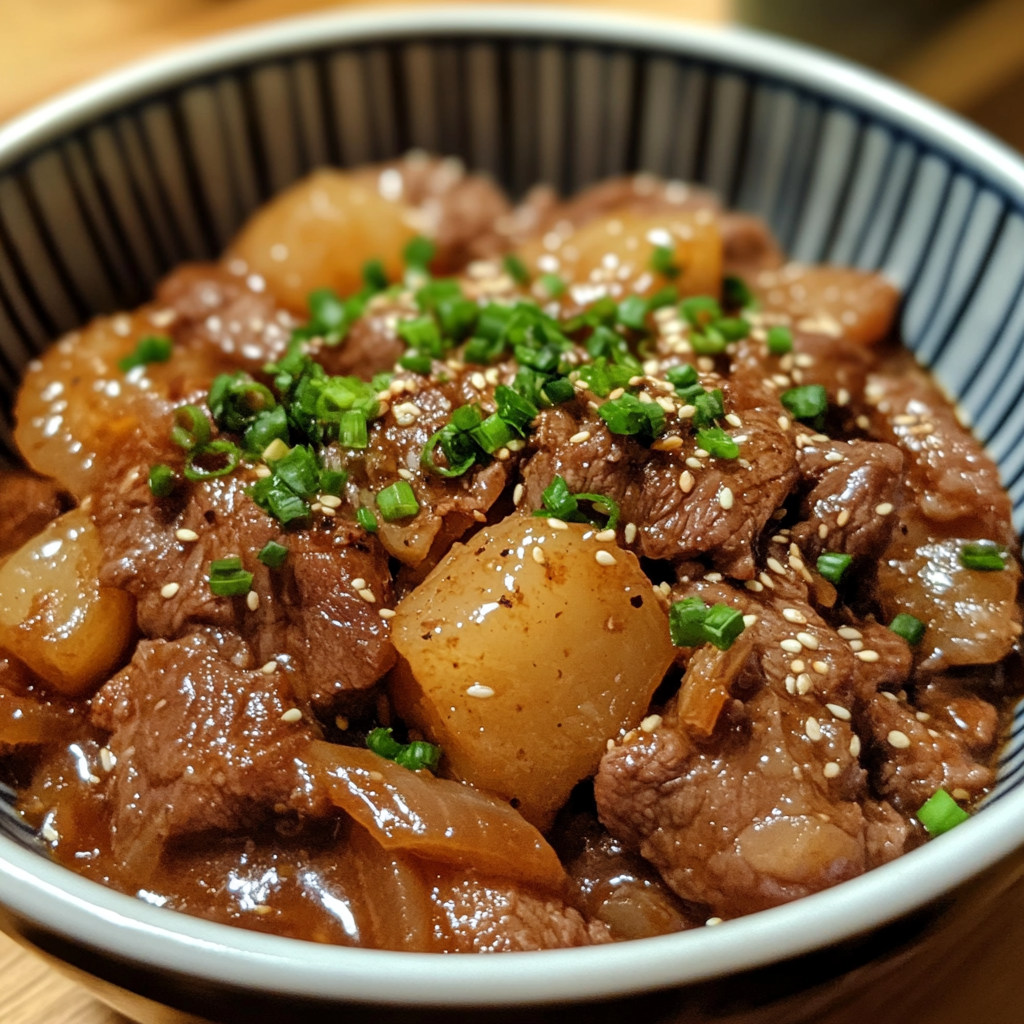
Exploring Global Dishes Featuring Beef Tendon
Beef tendon is not only a staple in traditional Asian cuisines but is also enjoyed in many parts of the world. From the savory, aromatic Vietnamese Pho to the rich, flavorful Chinese beef tendon soup, there are numerous global dishes that feature this unique ingredient. In Filipino cuisine, beef tendon is often included in bulalo, a hearty beef shank soup that showcases tender beef and vegetables. In Japan, beef tendon is commonly used in nikujaga (a simmered dish of beef, potatoes, and vegetables) or even deep-fried to create kushikatsu, a crispy skewer dish. Exploring these global recipes allows you to experience the versatility of beef tendon and discover the various ways it enhances different flavor profiles across cultures.
Beef Tendon vs. Other Beef Cuts: What Makes It Unique?
Compared to more commonly used beef cuts, beef tendon stands out due to its unique texture and collagen content. While cuts like brisket or chuck roast are known for their marbling and flavor, beef tendon’s distinguishing feature is its ability to transform into a gelatinous and tender treat when cooked properly. The high collagen content in the tendon gives it a melt-in-your-mouth texture that contrasts sharply with the firm and fibrous qualities of other beef cuts. This distinctive texture makes it an ideal choice for slow-cooked dishes that highlight the benefits of long braising or simmering.
Understanding the differences between beef tendon and other cuts of beef can help you better appreciate its culinary potential and choose the right recipe for your taste.
How to Prepare Beef Tendon for Cooking: Cleaning and Pre-Cooking Tips
Before cooking beef tendon, it’s important to properly clean and prepare it to ensure the best flavor and texture. Beef tendon typically comes in large, tough pieces that may need to be trimmed or sliced into smaller sections to fit your cooking pot or dish. Rinse the tendon under cold water to remove any excess fat, debris, or blood.
Some recipes may call for blanching the tendon briefly in boiling water to remove impurities, a technique that helps ensure the broth or sauce remains clear and flavorful. Once cleaned, the tendon can be simmered in a pot with seasonings or added to soups, stews, or stir-fries. Pre-cooking steps like this help the tendon absorb flavors more effectively and result in a smoother, more tender finished dish.
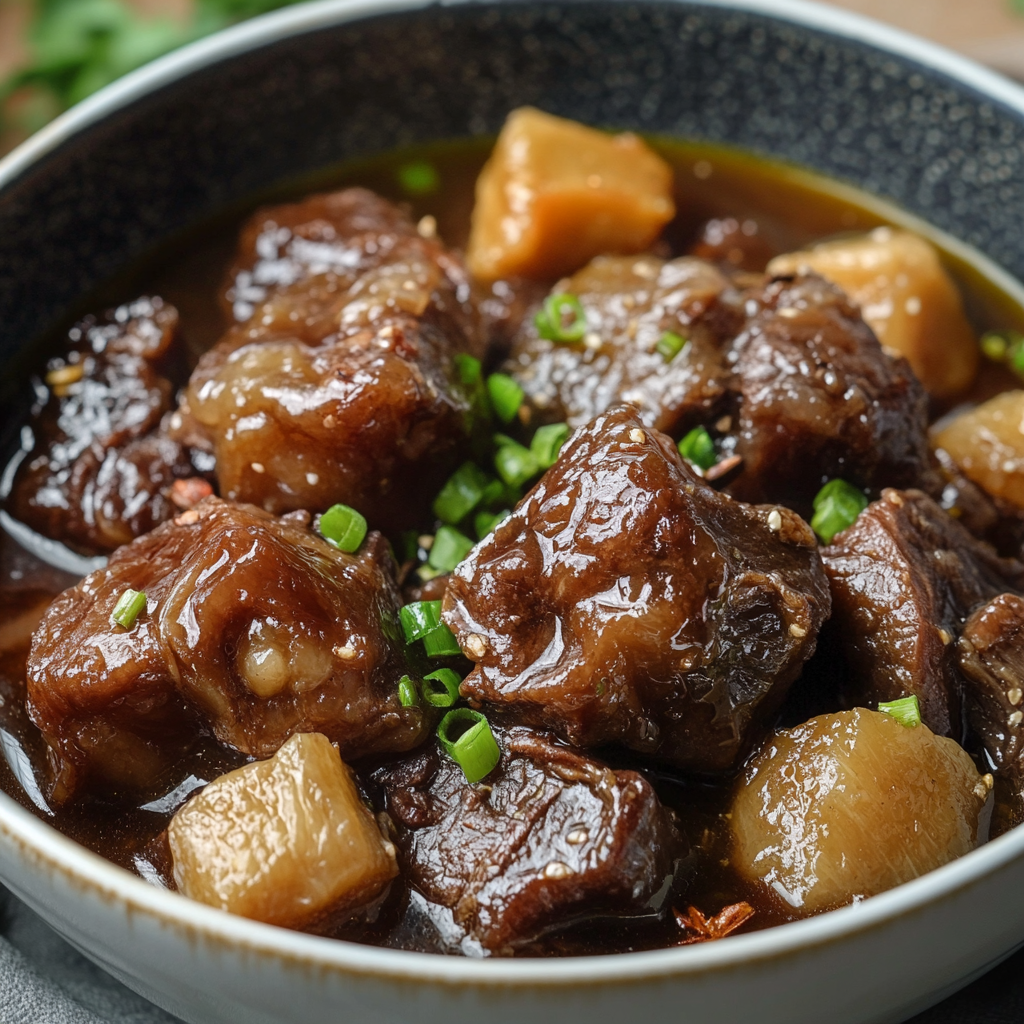
Beef Tendon in Modern Cuisine: Creative Recipes and New Trends
While beef tendon has a rich history in traditional cooking, it has also found its place in modern culinary trends. Chefs around the world are experimenting with this ingredient, incorporating it into innovative recipes that push the boundaries of how we use beef. For instance, beef tendon can be transformed into crispy, crunchy snacks or used as a filling for gourmet dumplings. In modern fusion dishes, beef tendon can be braised in wine, paired with sophisticated ingredients, and served in fine dining restaurants. Its versatility allows it to be used in both traditional and contemporary dishes, making it an exciting ingredient to work with for both professional chefs and home cooks looking to experiment in the kitchen.
Pairing Beef Tendon with Side Dishes and Garnishes
When preparing beef tendon, it’s essential to consider the side dishes and garnishes that will complement its rich and hearty flavor. Since beef tendon has a chewy, gelatinous texture, pairing it with fresh and crunchy elements can create a nice balance of flavors. For example, serve beef tendon in a soup or stew with crispy fried shallots, fresh cilantro, or a squeeze of lime to add brightness and contrast.
On the side, steamed rice or stir-fried vegetables work wonderfully to soak up the rich broth or sauce. Additionally, serving beef tendon with noodles, such as in Vietnamese Pho or Chinese noodle soups, can make for a complete and satisfying meal. The right side dishes and garnishes can elevate the dish and enhance the overall dining experience.
Beef Tendon for Special Diets: Low-Carb, High-Protein Options
Beef tendon is a fantastic ingredient for those following low-carb or high-protein diets. It’s rich in collagen and protein while being very low in carbohydrates, making it a good choice for keto, paleo, or other low-carb eating plans. Additionally, beef tendon is often considered a more sustainable and health-conscious choice, as it uses less popular cuts of meat that would otherwise go to waste. If you’re looking for ways to increase your protein intake without relying on traditional beef cuts like steaks or ground beef, incorporating beef tendon into your meals is an excellent option. Whether you enjoy it in soups, stews, or stir-fries, it can be part of a healthy, protein-packed meal.
Beef Tendon: A Budget-Friendly Protein Option
One of the significant benefits of using beef tendon in your cooking is that it is an affordable source of protein. While premium beef cuts like rib-eye or tenderloin can be quite expensive, beef tendon is typically sold at a lower price, making it a budget-friendly option for families or those looking to eat healthily without breaking the bank.
Despite being inexpensive, beef tendon is full of flavor and can create an elegant, satisfying dish when cooked well. Its rich collagen content means that a little goes a long way in terms of both flavor and nourishment, offering great value for your money. It’s a perfect example of how lesser-known cuts of meat can provide high-quality, flavorful meals at a fraction of the cost of more common beef cuts.
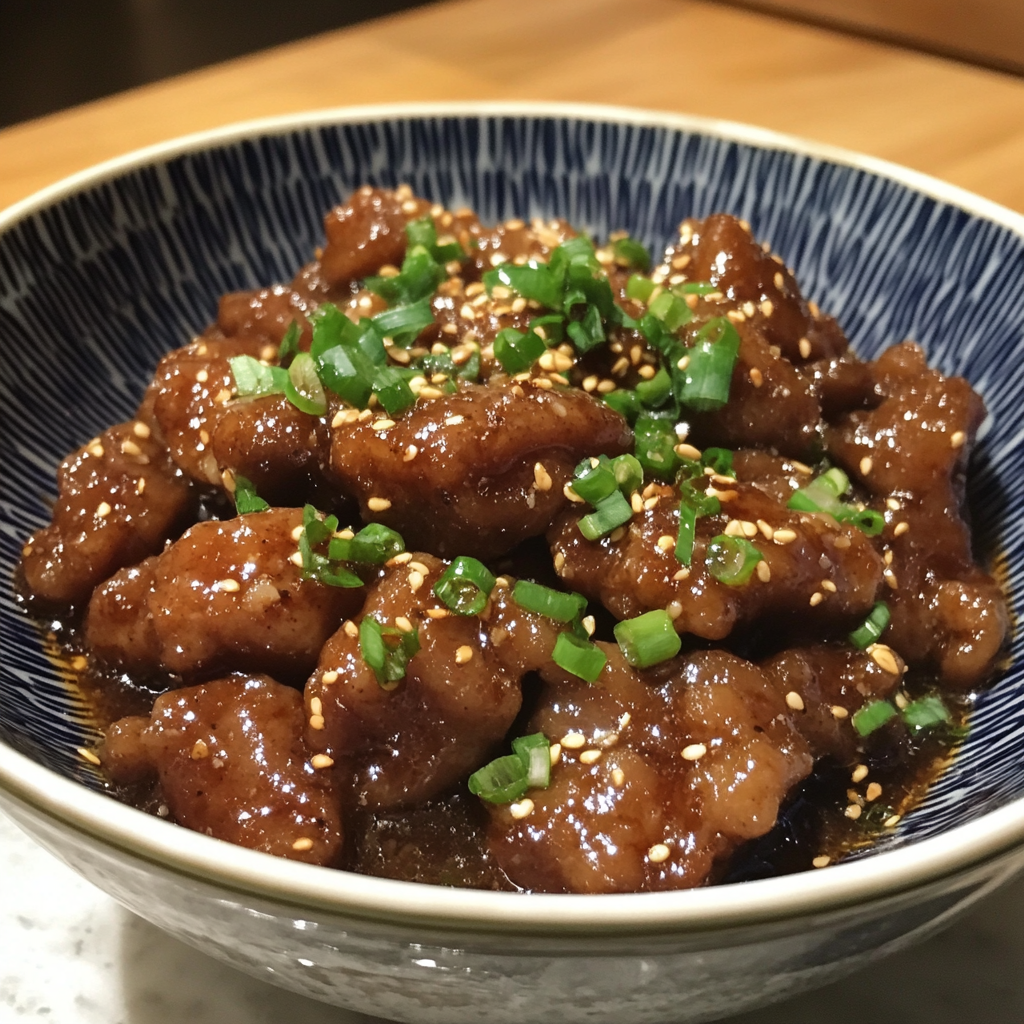
The Science Behind Cooking Beef Tendon: How Collagen Breaks Down
Understanding the science behind cooking beef tendon is essential for mastering its preparation. The tendon itself is made of collagen, a connective tissue that is tough and fibrous when raw. However, when slow-cooked or braised over a long period, the heat causes the collagen to break down into gelatin, giving the tendon its characteristic soft, tender texture. This process, known as hydrolysis, allows the tendon to absorb the flavors of the cooking liquid and results in a melt-in-your-mouth experience. Knowing this, it’s important to cook beef tendon slowly to fully develop its texture and flavor. Using slow-cooking techniques like braising, simmering, or pressure cooking ensures that the collagen transforms properly into a silky, gelatinous texture.
How to Make Beef Tendon Soup: A Step-by-Step Guide
Beef tendon soup is one of the most popular ways to enjoy this ingredient, and making it from scratch can be a rewarding experience. To make a basic beef tendon soup, start by preparing your tendon — trim and clean it, then blanch it briefly in boiling water to remove any impurities. In a large pot, add the tendon, water, and aromatic ingredients like ginger, garlic, onion, and soy sauce. Bring the mixture to a boil, then reduce the heat and let it simmer for several hours until the tendon becomes tender and gelatinous.
Add seasonings such as salt, pepper, and any additional herbs or spices to taste. The result will be a flavorful and comforting soup where the tendon becomes the star of the dish, infusing the broth with its rich, savory flavor.
Beef Tendon in Stews and Braises: The Art of Long-Simmered Cooking
Beef tendon’s gelatinous texture makes it a perfect addition to stews and braises, where it can slowly cook in a flavorful sauce or broth. The long cooking process allows the tendon to soften, enriching the dish with its unique texture. To create a delicious beef tendon stew, begin by searing the tendon pieces in hot oil to develop a deep flavor.
Next, add vegetables such as carrots, onions, and potatoes, followed by broth or stock and any spices or seasonings you prefer. Simmer the dish on low heat for several hours, allowing the tendon to break down and absorb the flavors of the sauce. Beef tendon can be braised in wine or flavored with herbs like thyme or rosemary for additional depth. The final result is a rich, hearty dish that showcases the tendon’s tender, melt-in-your-mouth qualities.
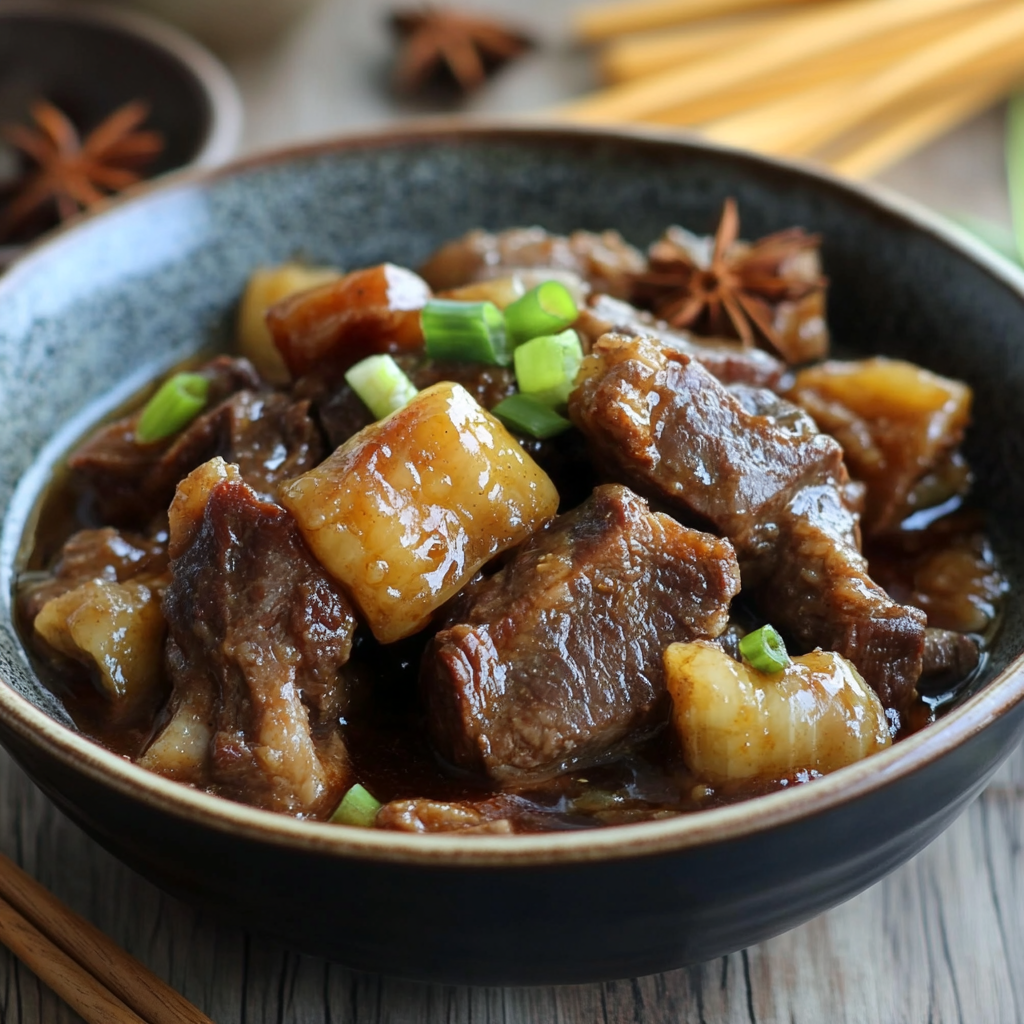
Cooking Beef Tendon in a Pressure Cooker: Faster Results with Maximum Flavor
If you’re short on time but still want to enjoy the tender, gelatinous texture of beef tendon, using a pressure cooker can drastically reduce cooking time without sacrificing flavor. The high pressure within the cooker speeds up the breakdown of collagen, making it possible to cook the tendon in just a fraction of the time compared to traditional simmering methods.
To prepare beef tendon in a pressure cooker, clean and trim the tendon, then add it to the cooker with aromatics, seasonings, and enough liquid (such as broth or water) to cover it. Cook under high pressure for about 40 to 60 minutes, depending on the size of the tendon pieces. Once done, allow the pressure to release naturally, and the result will be tender, flavorful beef tendon ready for your dish.
Marinating Beef Tendon: Adding Extra Flavor to Your Dish
Marinating beef tendon before cooking is a great way to infuse additional flavor into this otherwise neutral-tasting cut. While beef tendon has a natural, savory flavor, marinating it for a few hours or overnight can enhance the dish even more. A simple marinade of soy sauce, ginger, garlic, and a little sesame oil can help tenderize the tendon and impart additional umami flavors. For a spicier twist, add chili paste or ground pepper to the marinade. Once marinated, the tendon can be braised, simmered, or even stir-fried to incorporate the flavors into the dish. This step is particularly useful if you’re preparing dishes like braised beef tendon or stir-fried tendon, where the marinade can elevate the overall flavor profile.
Beef Tendon in Street Food: A Global Street Food Favorite
Beef tendon is a beloved ingredient in many street foods across the globe, where its tender, rich texture and savory flavor can shine. In countries like China, beef tendon is often deep-fried or skewered and sold as a popular street snack. In Taiwan, you’ll find beef tendon noodle soup served by street vendors, where the tendon is simmered to perfection in a rich broth. In Mexico, beef tendon can be featured in tacos or grilled for a smoky, flavorful experience. As a street food, beef tendon offers a quick, satisfying meal that highlights the versatility of this unique cut of meat. Whether it’s in a soup, sandwich, or skewer, beef tendon provides a delightful culinary experience wherever it’s served.
Beef Tendon for Beginner Cooks: Easy Recipes and Tips
If you’re new to cooking with beef tendon, starting with a simple recipe can help you get a feel for its preparation and cooking methods. One of the easiest ways to get started is by making a basic beef tendon soup or stew. Simply simmer the tendon with aromatics and seasonings to allow the natural flavors to develop. Another beginner-friendly approach is to add cooked beef tendon to a noodle dish, where the tendon can provide a chewy, satisfying texture. As you become more comfortable with this ingredient, you can experiment with more advanced recipes, such as stir-fries or braised dishes
. The key is to cook the tendon low and slow to ensure it becomes tender and flavorful. With a bit of practice, beef tendon can become an exciting and rewarding ingredient to work with in your kitchen.
Beef Tendon Recipe From DishBloom!
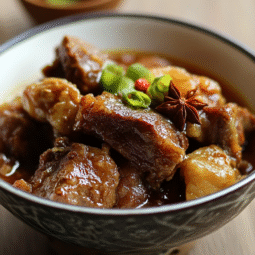
Beef Tendon Soup
Equipment
- Large pot or Dutch oven
- Sharp knife
- Cutting board
- Strainer (for cleaning tendon)
- Ladle
Ingredients
- 1 lb beef tendon fresh or frozen
- 6 cups water or beef broth
- 1 onion quartered
- 4-5 cloves garlic smashed
- 2-3 slices of ginger
- 2 tbsp soy sauce or tamari for a gluten-free option
- 1 tbsp rice wine optional
- 1 tsp sugar
- Salt to taste
- Fresh cilantro for garnish
- Optional: 2-3 star anise 1 cinnamon stick, 1 tbsp sesame oil
- Fresh lime wedges or chili sauce for serving optional
Instructions
- Prepare the Beef Tendon: Begin by rinsing the beef tendon under cold water to remove any debris. If it's particularly tough, blanch the tendon in boiling water for 5 minutes to clean it, then drain it and set it aside.
- Simmer the Soup Base: In a large pot, combine the beef tendon, water or broth, onion, garlic, ginger, soy sauce, rice wine (if using), and sugar. Bring to a boil over medium-high heat, then reduce the heat and let it simmer uncovered for 3-4 hours. During this time, the tendon will soften, and the flavors will meld together. Add salt to taste.
- Add Aromatics (Optional): If you’re using star anise or cinnamon sticks, add them in the final 30 minutes of simmering for a more aromatic broth. Remove them before serving.
- Serve the Soup: Once the tendon has become tender and gelatinous, ladle the soup into bowls. Garnish with fresh cilantro, and serve with lime wedges or chili sauce on the side for extra flavor.

Notes
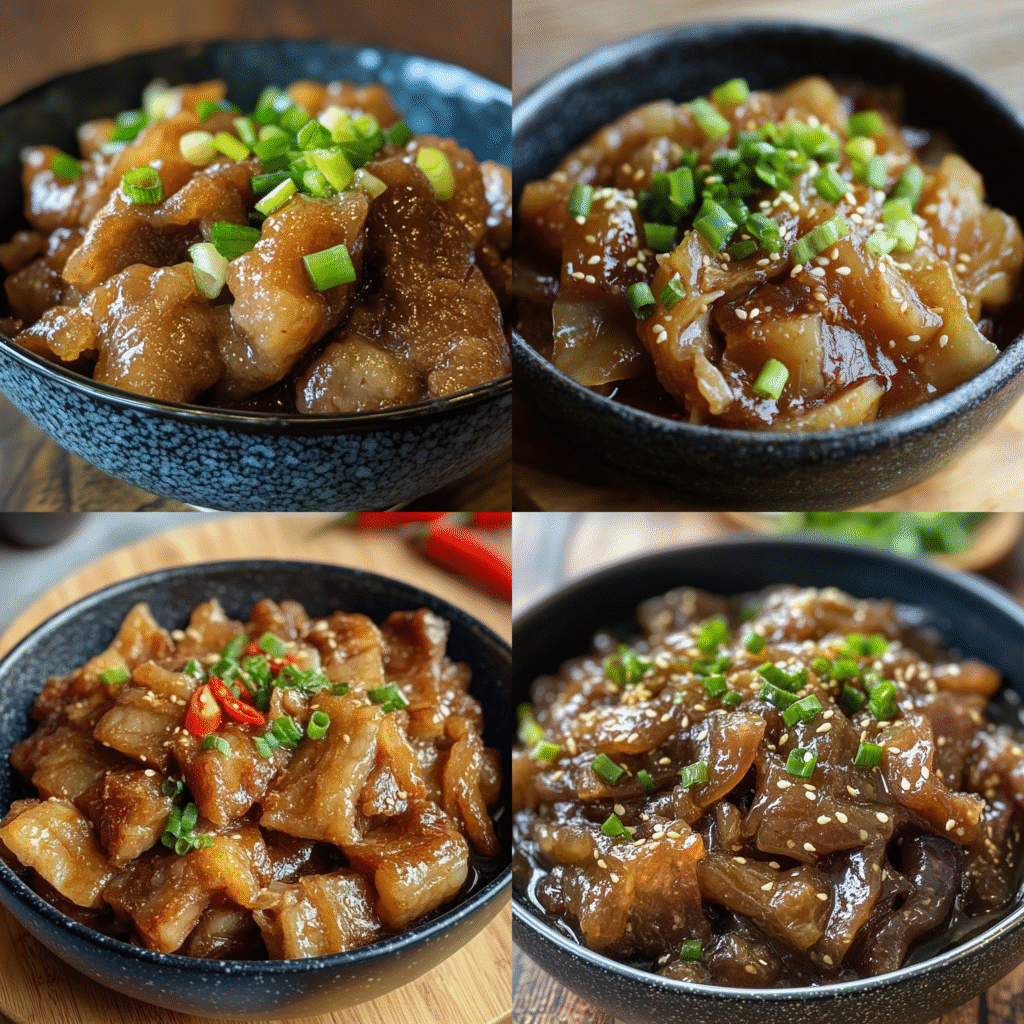
Conclusion
In conclusion, beef tendon is a highly nutritious and flavorful ingredient that offers many health benefits, such as promoting joint health, improving skin elasticity, and providing essential amino acids. Its high collagen content makes it a great addition to slow-cooked dishes, where it transforms into a tender, gelatinous texture that enriches soups, stews, and braises. The unique texture and savory taste of beef tendon make it a valuable ingredient in many global cuisines, allowing you to experiment with traditional and modern recipes alike.
When preparing beef tendon, proper selection and storage are crucial to ensure the best quality and flavor. Choosing fresh tendon with a firm texture and minimal blemishes is essential for a satisfying culinary experience. Additionally, proper storage whether in the refrigerator or freezer will ensure that the tendon remains fresh and ready for use in future meals. With the right care, beef tendon can be stored for extended periods, allowing you to enjoy its benefits at your convenience.
Whether you’re an experienced cook or just starting to explore the world of beef tendon, its versatility and health benefits make it a fantastic addition to your kitchen. From nourishing soups to creative dishes, beef tendon can elevate the flavor profile of your meals while supporting your overall health. By understanding how to select, store, and cook beef tendon, you can make the most of this underrated yet rewarding ingredient in your culinary adventures.
FAQs: Beef Tendon Recipe
Frequently Asked Questions about Beef Tendon
What is Beef Tendon?
Beef tendon is a cut of meat from the tendon of a cow. It is known for its chewy, gelatinous texture that becomes tender when cooked slowly.
How do I cook Beef Tendon?
To cook beef tendon, it needs to be boiled or simmered for several hours to become tender. It can be prepared in a broth with herbs and spices, or cooked in a pressure cooker.
What are the benefits of eating Beef Tendon?
Beef tendon is rich in collagen, which is beneficial for skin health, joint function, and overall tissue repair.
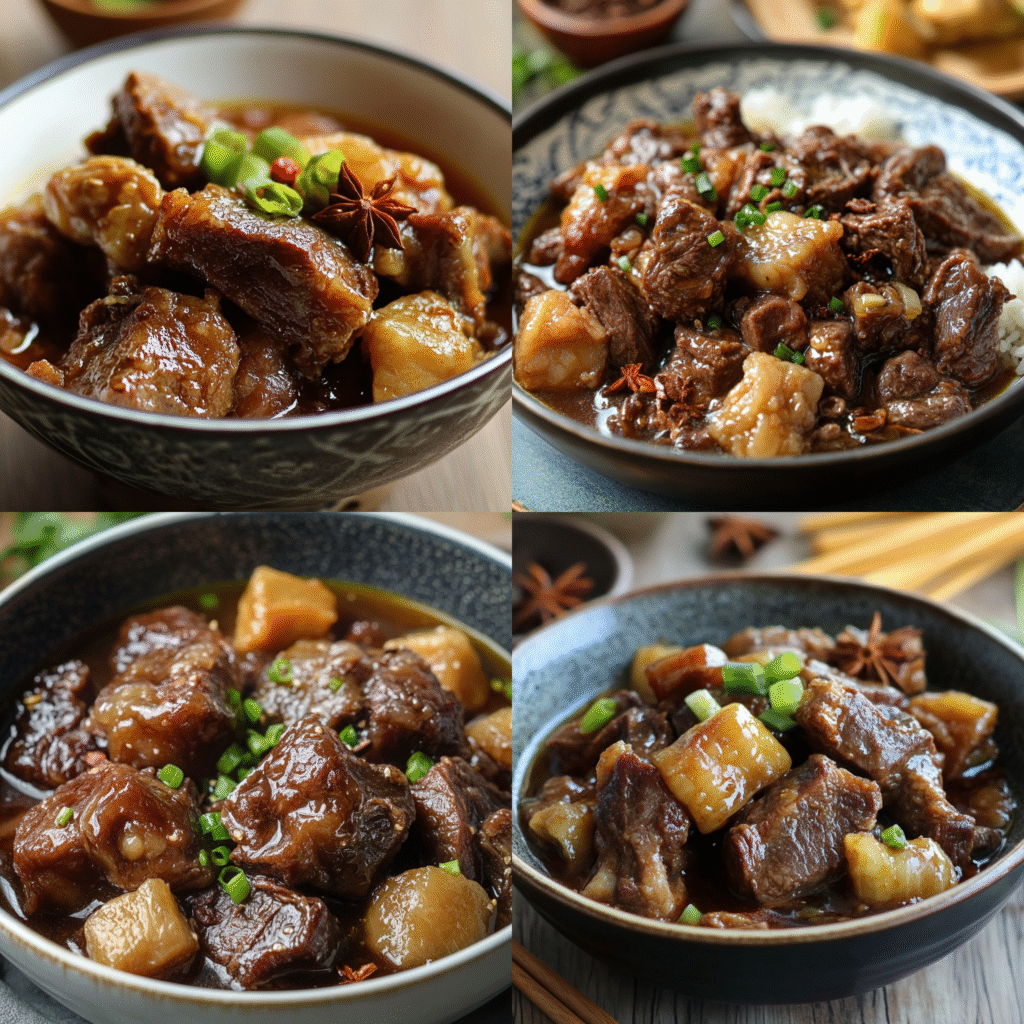
Share Your Twist!
Whether you’ve added a new twist to the traditional beef tendon soup, experimented with unique marinades, or created a stir-fry with unexpected ingredients, share your creation with us! Perhaps you swapped out soy sauce for tamari, tried a spicy chili paste for added heat, or even infused your dish with fresh herbs for an aromatic touch. We’d love to hear about how you’ve made beef tendon your own!
📸 Tag us on Instagram using #BeefTendonTwist and show off your mouth-watering dish. We might just feature your recipe in our next post!
Creativity is at the heart of every great recipe, so don’t be shy to experiment. What’s your secret ingredient for making beef tendon even more delicious? Share your tips and ideas in the comments below!

